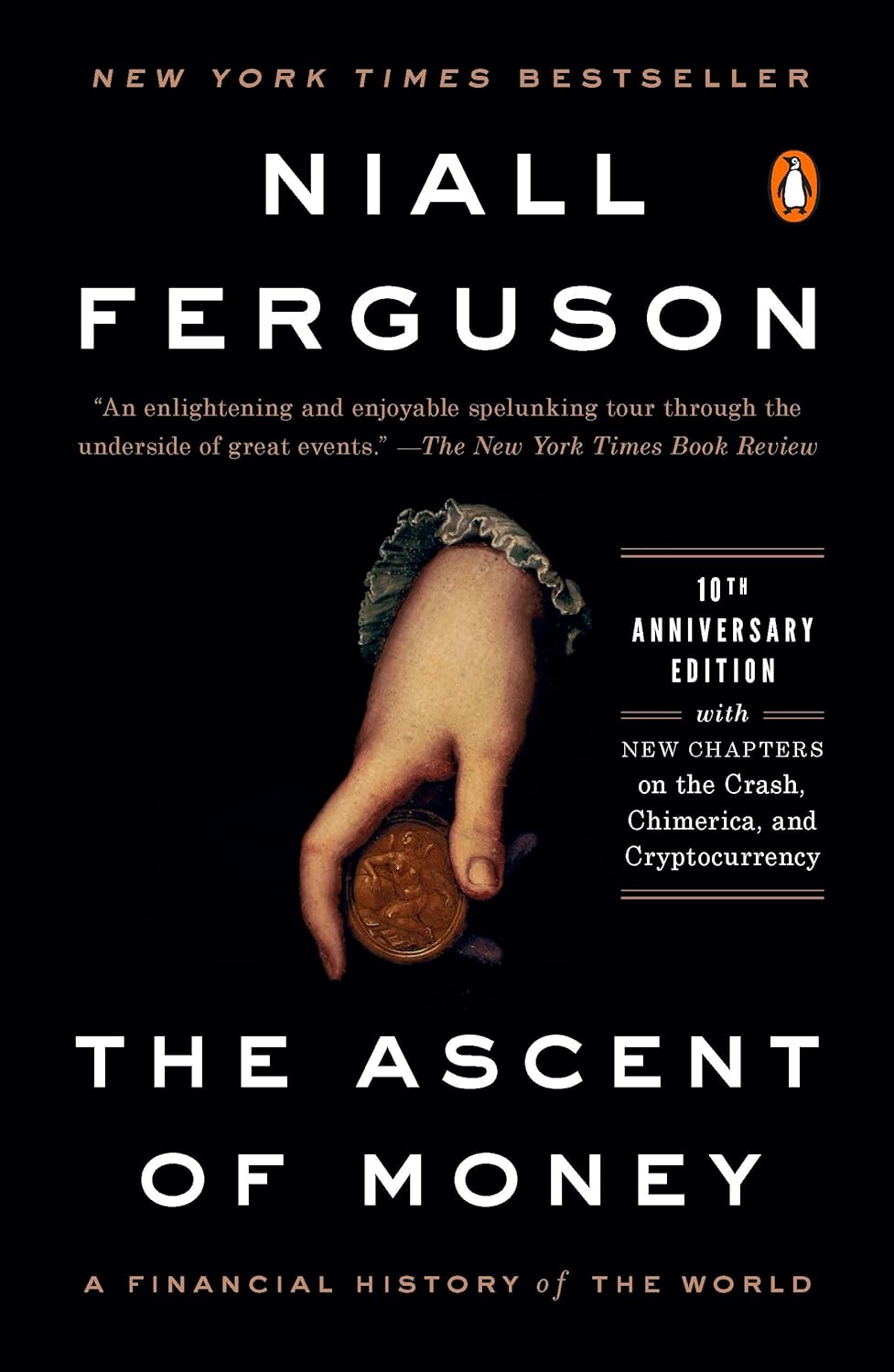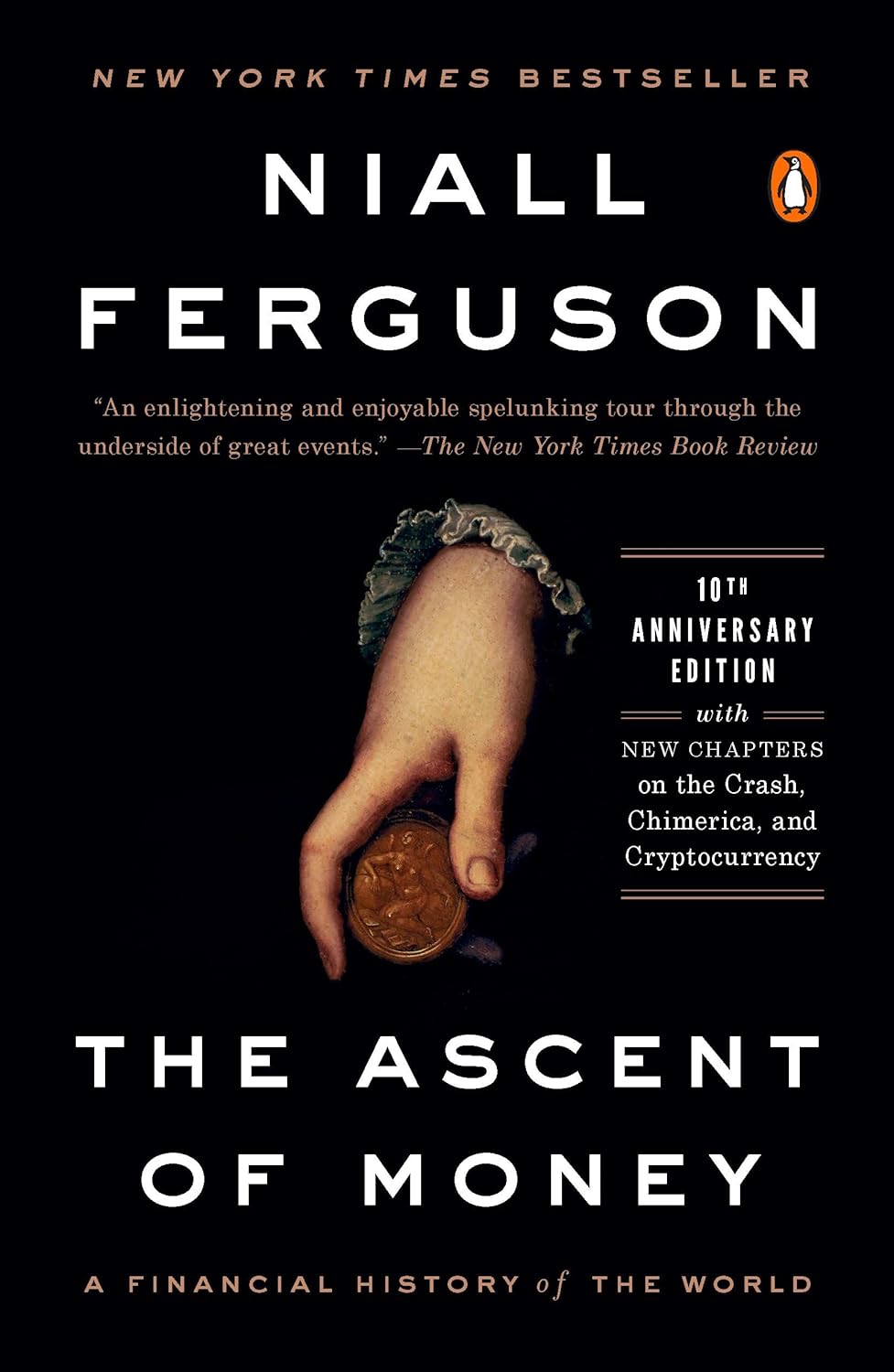Niall Ferguson’s The Ascent of Money: A Financial History of the World is a captivating journey through the intricate tapestry of finance intertwined with historical events. As someone who enjoys delving into historical narratives that explain modern phenomena, this book instantly caught my attention. I approached it not only as a study of money but as an exploration of how financial systems have shaped civilizations over centuries.
Ferguson’s updated 10th anniversary edition incorporates new chapters that address critical developments such as the 2008 financial crash, the fragility of "Chimerica," and the rise of cryptocurrencies like Bitcoin. These additions mark a necessary evolution of the narrative, showcasing his signature clarity in explaining complex concepts. The book effectively presents finance as the backbone of history, revealing how significant events—such as the Renaissance facilitated by Italian traders, and the French Revolution rooted in stock market bubbles—have been influenced by monetary systems.
One of the positives that resonate well with readers is how Ferguson translates complex financial theories into accessible language, making it an engaging read. In the words of one reader, this approach demystifies finance, enhancing understanding rather than leaving the audience befuddled by jargon. I found myself nodding along as I read passages that discussed the fundamental nature of money and its relationship to trust, making it easier to grasp concepts that I had previously found daunting.
However, while much of the book flows smoothly and remains engaging, there were pacing issues that made certain sections feel slightly dense and superficial. Some reviews echoed this sentiment, suggesting that while Ferguson presents a rich historical narrative, there are times when the pacing can stall, leaving readers yearning for a deeper dive rather than a mere overview. For instance, the detailed exploration of the Civil War’s significance was intriguing, yet I agree with critiques that argue it could have included a more rounded analysis rather than focusing predominantly on financial implications.
On a more positive note, Ferguson’s emphasis on the interconnectedness of global economies—particularly through the lens of U.S.-China relations—was compelling. The notion of "Chimerica" as a fragile partnership struck me as particularly relevant, especially given the current global economic landscape. It was fascinating to read about the intricate dance between these two powerhouses and how their financial interactions have shaped political landscapes.
In reflecting on the content, I couldn’t help but appreciate the anecdotes sprinkled throughout the text. These stories often breathe life into statistical data, highlighting the human element behind global economies. One notable passage discussed how financial markets can exhibit irrational behavior, akin to human reactions during crises, a metaphor that resonates strongly given recent economic tumult.
Ultimately, while Ferguson makes a strong case for understanding how historical context plays a crucial role in grasping present-day economic challenges, some may feel that his arguments are overly opinionated in areas. The book’s tendency to lean heavily on finance as a driver of historical events could overshadow other significant factors, like leadership or cultural elements, in important historical moments.
In conclusion, The Ascent of Money is an insightful read that successfully interweaves finance with history, providing valuable lessons for understanding contemporary economic dilemmas. Despite some pacing issues and a tendency towards a one-dimensional analysis in certain sections, the book remains a thought-provoking exploration of how the evolution of money has influenced civilizations across time. If you’re keen on financial history or wish to understand the intricate connections between economics and significant historic events, this book is well worth the read. I would wholeheartedly recommend it to anyone intrigued by the backstory of our financial systems and the currents that flow through them.
Overall, I would rate The Ascent of Money a strong 4.5 out of 5 stars—definitely a must-read for history and finance enthusiasts alike!








